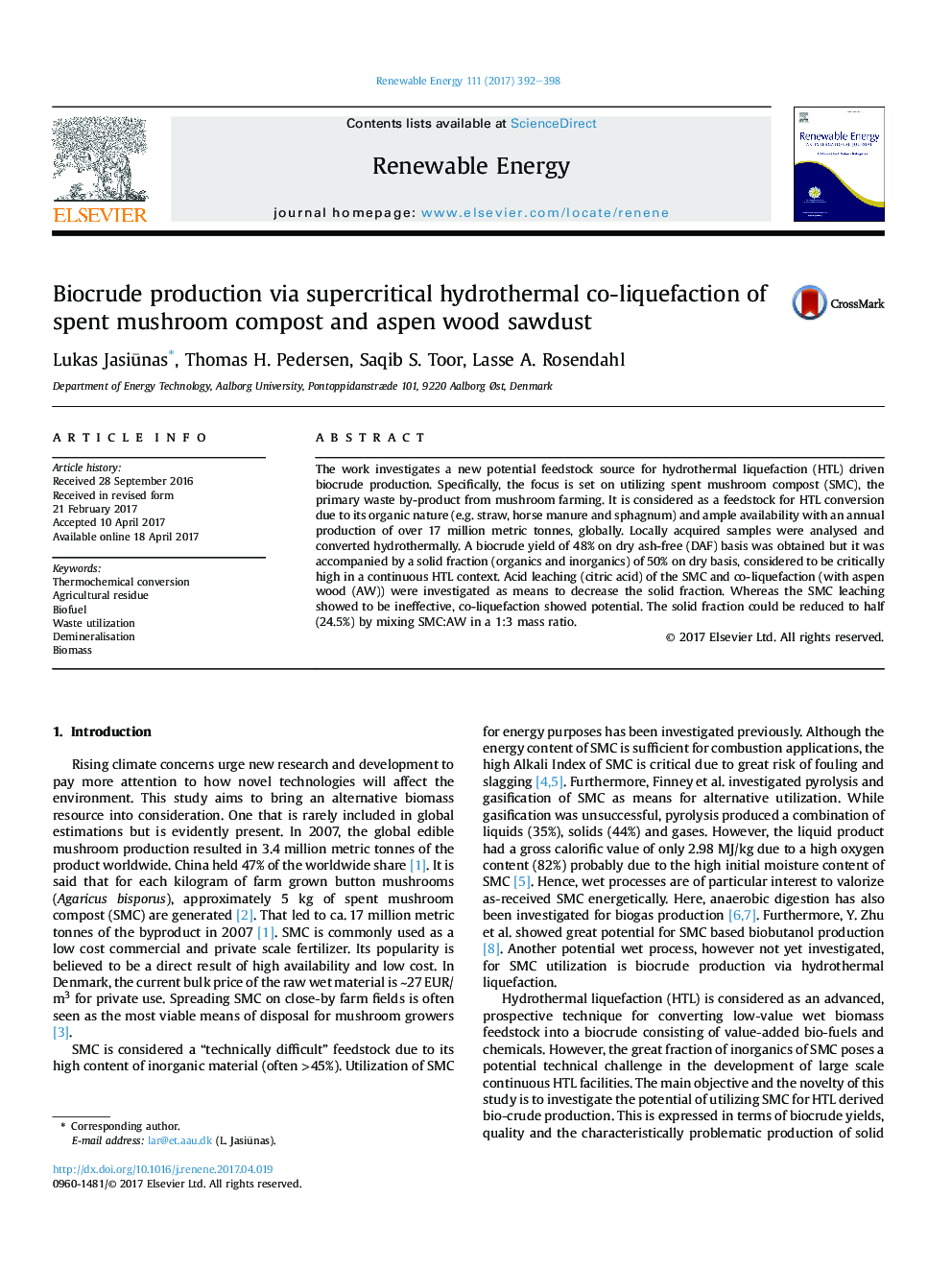| Article ID | Journal | Published Year | Pages | File Type |
|---|---|---|---|---|
| 4926314 | Renewable Energy | 2017 | 7 Pages |
Abstract
The work investigates a new potential feedstock source for hydrothermal liquefaction (HTL) driven biocrude production. Specifically, the focus is set on utilizing spent mushroom compost (SMC), the primary waste by-product from mushroom farming. It is considered as a feedstock for HTL conversion due to its organic nature (e.g. straw, horse manure and sphagnum) and ample availability with an annual production of over 17 million metric tonnes, globally. Locally acquired samples were analysed and converted hydrothermally. A biocrude yield of 48% on dry ash-free (DAF) basis was obtained but it was accompanied by a solid fraction (organics and inorganics) of 50% on dry basis, considered to be critically high in a continuous HTL context. Acid leaching (citric acid) of the SMC and co-liquefaction (with aspen wood (AW)) were investigated as means to decrease the solid fraction. Whereas the SMC leaching showed to be ineffective, co-liquefaction showed potential. The solid fraction could be reduced to half (24.5%) by mixing SMC:AW in a 1:3 mass ratio.
Keywords
Related Topics
Physical Sciences and Engineering
Energy
Renewable Energy, Sustainability and the Environment
Authors
Lukas Jasiūnas, Thomas H. Pedersen, Saqib S. Toor, Lasse A. Rosendahl,
